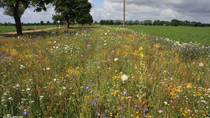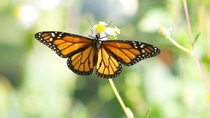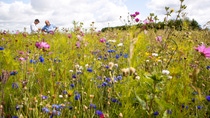Agriculture
Environment
Sustainable agriculture can only exist in healthy ecosystems, where biodiversity thrives, and ecosystem service provision is ensured. We are supporting farmers to use our products in a responsible way, avoiding unacceptable impacts on the environment, while growing high-quality and affordable food.
Why is biodiversity so important and what are threats to it?
Biodiversity loss is seen as one of the major threats to humankind, besides climate change. In rural landscapes, the major threat to biodiversity is typically caused by habitat loss. Yet, also crop protection and pest control products have an influence on biodiversity by inadequate practices during the process of controlling damaging pests and weeds as well as ecosystem services associated to agriculture. Ecosystem functions are closely linked to adequate biodiversity and a healthy environment. In this context, especially the protection of wild and managed pollinators is important, which is essential for pollinating a large part of the agricultural crops (read more). In addition, higher biodiversity leads to a higher resilience of ecosystems to pest invasions, as natural predators help to maintain the balance in nature.
What do we do to maintain and foster biodiversity?
We engage to maintain and foster biodiversity in agricultural landscapes by partnering with relevant stakeholders for habitat creation and enrichment (CropLife International Biodiversity Report). This ranges from promoting off-site habitats for iconic monarch butterflies to forest restoration near Guaratinguetá in the Mata Viva project.
Clean water is essential – not only for human health and our economic development – but also for the environment. In agriculture, besides nutrients and erosion, also crop protection and pest control products may cause unacceptable water pollution, if not handled responsibly or used in vulnerable situations (read more).
Our stewardship activities aim to enable farmers and operators to minimize unintended environmental exposure to pesticides and thereby to avoid unacceptable impacts on biodiversity and water resources. A key element is the promotion of best management practices e.g., the use of low-drift nozzles and respecting no-spray or permanently vegetated buffer zones towards adjacent natural vegetation and water bodies.

The project “Alas para el Campo” (Wings for the Field) contributes to the preservation of monarch butterflies, pollinators, and beneficial organisms through the implementation of Good Agricultural Practices.
The initiative has been promoting alliances between private and public initiatives to restore and preserve habitats through actions and programs in the countryside and urban areas; its efforts have been recognized as a finalist for the Leading Companies in Sustainable Innovation award organized by HSBC. Its focus lies on Mexico, Central America (Guatemala and Costa Rica), and the Caribbean (Dominican Republic).
Alas para el Campo, in partnership with Grupo Colono, has arrived in Costa Rica to contribute to biodiversity conservation. The alliance involves the construction of over a thousand square meters of pollinator gardens, translating to more than 40 gardens in the provinces where Grupo Colono operates, with 1,114 different species of plants providing habitat and nutrition for pollinators. Read more
Watch the video to see directly what we do to contribute to restoring and preserving biodiversity and follow "Alas para el Campo" on social media platforms for updates.
Take a look at concrete examples of our stewardship initiatives
More key topics within Smart Stewardship
Learn more about our other sustainability commitments









